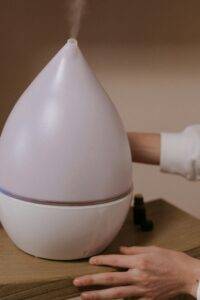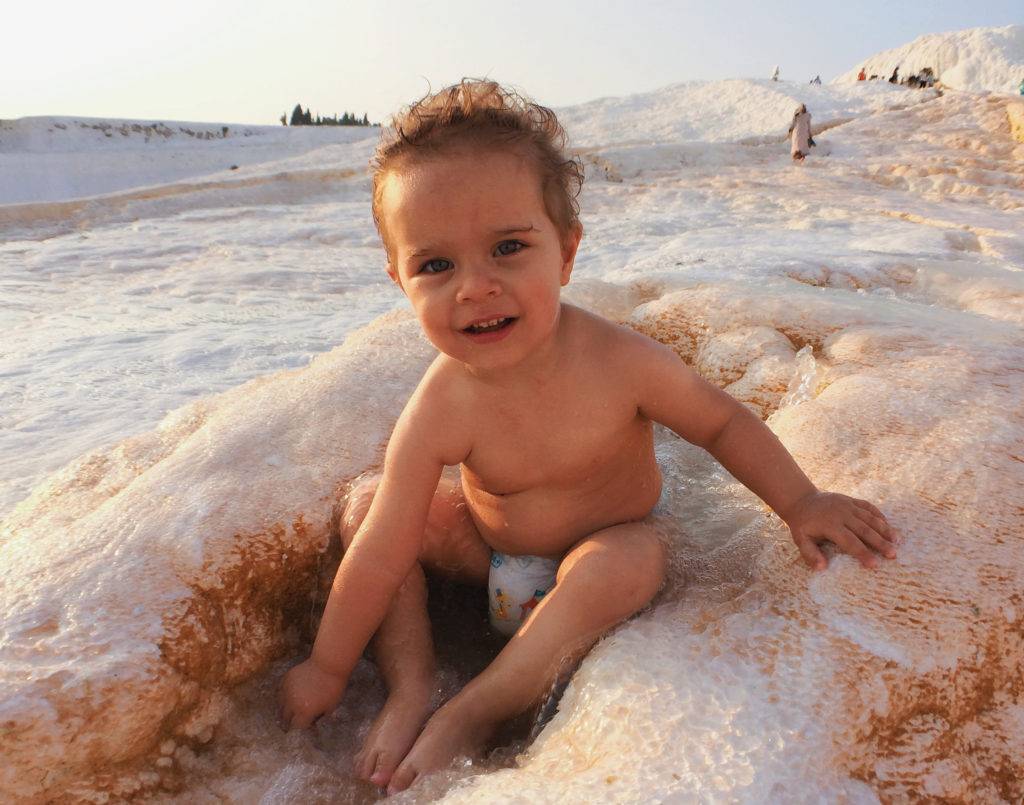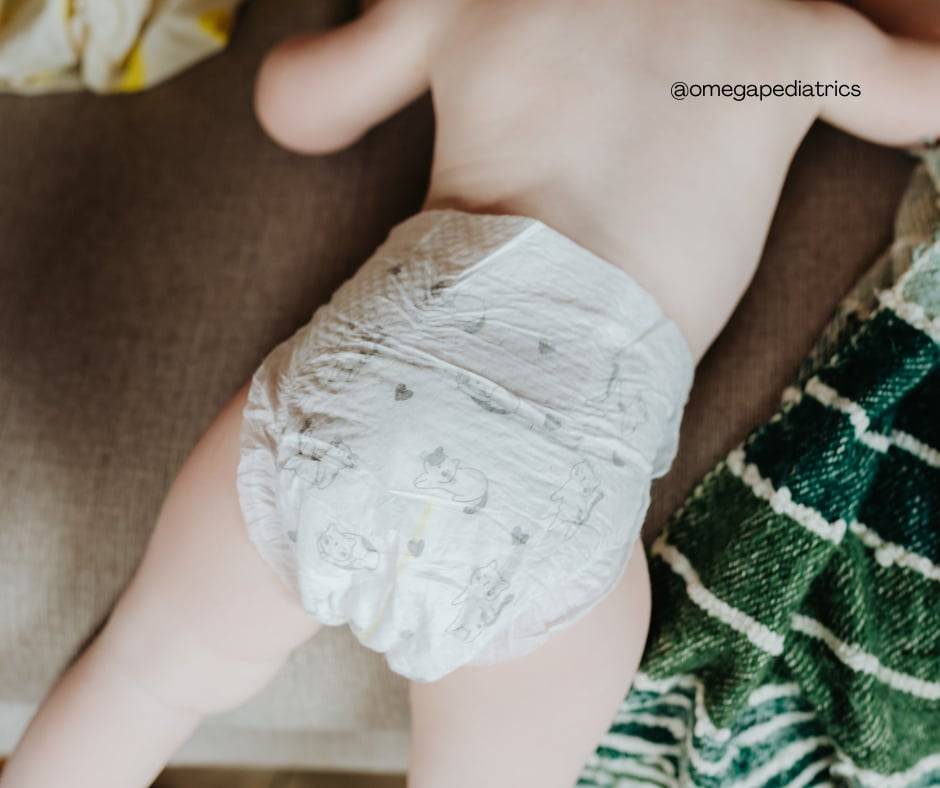Newborn babies bring immense joy and excitement to families, but they also come with a myriad of questions and concerns, especially for first-time parents. One common question is, “Why my newborn baby is red?” This complete guide will help you understand why newborns often appear red and what it means about their health.
Why Newborn Baby is Red?
1. Blood Circulation and Newborn Skin
When a baby is born, their skin might appear red or pink. This is primarily due to their blood circulation. Newborns have higher red blood cells vital for carrying oxygen. After birth, these red blood cells circulate close to the skin surface, giving it a red appearance.
This vibrant circulation is part of the newborn’s adaptation to life outside the womb, where oxygen is supplied directly through the umbilical cord.
2. Immature Skin
Newborn skin is thin and delicate, making blood vessels more visible at the surface. It hasn’t fully developed the protective layers that adults have. This contributes to the red or pinkish hue. The newborn skin is still developing its full thickness and protective barriers, which takes time as the baby grows and adjusts to the outside environment.
3. Birth Trauma
The process of birth is quite intense for a baby. The pressure and squeezing as they pass through the birth canal cause temporary redness and even some bruising. This is normal and typically fades within a few days. The physical exertion and the compression during delivery lead to capillary breakage, which presents skin redness.
This is a temporary condition that heals quickly as the baby recovers from the birth process.
4. Temperature Regulation
Babies aren’t born with fully developed temperature regulation systems. This means their skin changes color based on their environment. If they’re too hot or cold, their skin becomes red as their body tries to adjust.
This condition, known as cutis marmorata, is a normal response to temperature changes and will lessen as the baby’s internal temperature regulation improves.
5. Erythema Toxicum
This is a common, harmless rash that develops in newborns. It appears as red blotches with a small white or yellow center. This rash comes and goes and resolves by itself within the first week or two of life. It’s a benign condition that doesn’t cause discomfort to the baby and no required treatment.
It’s often seen on the face, chest, and back and is part of the skin’s natural adjustment to the new environment outside the womb.
Is it Normal if Newborn Baby is Red?
In most cases, the redness in a newborn’s skin is completely normal. It’s a part of their body’s adjustment to life outside the womb. As their circulation improves and their skin matures, the redness will diminish. Many babies exhibit this rosy coloration, a healthy sign of good blood flow and oxygenation.
When to Seek Medical Advice if Newborn Baby is Red
While redness is often normal, there are situations where you should seek medical advice:
- Persistent Redness: If the redness doesn’t fade or is accompanied by other symptoms such as swelling, fever, or the baby appearing in pain.
- Rashes: If the red areas are accompanied by a rash that spreads or seems to cause discomfort.
- Breathing Issues: If your baby has trouble breathing, signifying a serious issue.
These signs could indicate underlying health problems that need to be addressed by a healthcare professional. Monitoring your baby closely and noting any additional symptoms will help your pediatrician diagnose and treat any issues promptly.
How to Care for Your Newborn’s Skin
- Gentle Cleansing: Newborn skin is sensitive, so use gentle cleansers and avoid harsh soaps. A soft sponge bath with warm water is sufficient for the first few weeks. Avoid using any products that contain fragrances or dyes, as these can irritate the baby’s delicate skin. Stick to mild, hypoallergenic baby products recommended by pediatricians.
- Moisturizing: Keeping your baby’s skin moisturized helps prevent dryness and irritation. Use hypoallergenic lotions designed for babies to avoid any allergic reactions. Applying a gentle, fragrance-free moisturizer after baths helps maintain the skin’s natural moisture barrier, protecting it from becoming too dry or irritated.
- Temperature Control: Ensure your baby is dressed appropriately for the temperature. Overheating causes redness, so use light layers and avoid heavy blankets. Similarly, keep your baby warm in cooler environments to prevent their skin from reacting to the cold. Maintaining a comfortable room temperature and using breathable fabrics for clothing and bedding help keep your baby’s skin healthy.
- Avoiding Irritants: Be mindful of products that come into contact with your baby’s skin. This includes laundry detergents, lotions, and even fabrics. Choose products that are free from dyes and fragrances. Washing your baby’s clothes and bedding in a gentle, hypoallergenic detergent helps prevent skin irritation. Also, consider using soft, natural fabrics like cotton that are gentle on the skin.
Common Skin Conditions when Newborn Baby is Red
- Milia: These appear as tiny white bumps on the face caused by trapped skin flakes. These usually disappear on their own without treatment. These small cysts are harmless and generally clear up within the first few weeks of life as the skin’s pores open up and function more effectively.
- Jaundice: A condition where a baby’s skin and eyes appear yellow. This is caused by excess bilirubin in the blood. While mild jaundice is common and usually harmless, severe cases require medical treatment. Newborn jaundice often appears within the first few days after birth and typically resolves as the baby’s liver matures and processes bilirubin more efficiently. Monitoring the baby’s bilirubin levels and ensuring adequate feeding help manage jaundice.
- Diaper Rash: Diaper rash is caused by prolonged exposure to a wet or dirty diaper. Keeping the diaper area clean and dry helps prevent and treat this condition. Use barrier creams containing zinc oxide to provide a protective layer on the skin, preventing irritation from moisture and friction. Frequent diaper changes and allowing the diaper area to air out can also help keep diaper rash at bay.
When Newborn Baby is Red Indicates a Problem
- Infection: In some cases, redness can be a sign of infection. If the red area is warm to the touch, or swollen, or if your baby has a fever, seek medical attention immediately. Skin infections, such as cellulitis, require prompt medical treatment to prevent complications. Early signs should not be ignored, and a healthcare provider should prescribe appropriate treatments, such as antibiotics.
- Allergic Reactions: Allergic reactions can cause redness, swelling, and rash. If you suspect such, discontinue or remove the allergen, and consult your pediatrician.
- Eczema: Eczema is a condition that causes red, itchy, and inflamed skin that’s triggered by various factors, including allergens and irritants. If your baby has eczema, your pediatrician recommends appropriate treatments and skincare routines.
Tips for New Parents when Newborn Baby is Red
- Regular Check-ups: Regular pediatric check-ups are essential for monitoring your baby’s health. Your pediatrician provides guidance and addresses concerns about your baby’s skin and overall health.
- Educate Yourself: Understanding common newborn conditions and symptoms helps you feel more confident in caring for your baby. Reading reliable sources and discussing with healthcare professionals are great ways to stay informed.
- Stay Calm: You might feel anxious about your newborn’s health but stay calm. Most newborn skin conditions are harmless and temporary. Trust your instincts and don’t hesitate to seek medical advice if something doesn’t seem right.
What to Do If Your Baby’s Redness Persists
- Identify Persistent Redness: Persistent redness can be a cause for concern. If your baby’s redness continues beyond the first few weeks of life, observe any other accompanying symptoms.
- Consult a Pediatrician: If your baby’s skin remains red and you notice other signs such as unusual swelling, discomfort, or fever, consult a pediatrician. A healthcare professional conducts a thorough examination to rule out any underlying conditions.
- Possible Treatments: Depending on the cause of the redness, your pediatrician recommends specific treatments. These range from topical ointments for skin conditions to adjustments in your baby’s environment to ensure comfort.
The Role of Genetics
Genetic Factors: Sometimes, the redness in a newborn’s skin is influenced by genetic factors. If parents have fair skin or a history of skin conditions, their baby might be more prone to redness.
Discussing Family History: Discuss your family’s medical history during pediatrician visits. This provides valuable insights and information to help identify if redness is a hereditary trait or if further investigation is needed.
Understanding Newborn Skin Development
The First Few Days: During the first few days of life, there are changes in the newborn’s skin. Initially, their skin is covered with vernix caseosa, a protective, cheese-like coating. As this wears off, the underlying skin might appear red and blotchy.
Adapting to the Environment: A newborn’s skin adapts to the new environment outside the womb. This transition causes temporary skin color and texture changes, which are usually normal and not a cause for concern.
Skin Maturation: Over the first few weeks and months, the baby’s skin matures and undergoes various changes. This process includes skin thickening and the development of more robust protective layers, eventually leading to a more stable skin color.
The Importance of Hydration
- Hydrating Your Baby: Ensuring your baby is well-hydrated is essential for maintaining healthy skin. For newborns, this primarily means regular feeding, whether breastfed or formula-fed.
- Recognizing Dehydration: Signs of dehydration in a newborn include dry lips, fewer wet diapers, and sunken fontanelle on their head. If you notice these signs, contact your pediatrician.
- Moisturizing the Skin: Aside from internal hydration, external hydration through baby-safe moisturizers helps keep the skin soft and prevents dryness and redness.
Seasonal Effects on Newborn Skin
Summer: Protect your baby’s skin from heat and sun exposure during the warmer months. Overheating causes redness and rashes, so dress your baby in light, breathable clothing and keep them in the shade.
Winter: Cold weather leads to dry, chapped skin. To protect your baby’s skin in the winter, keep them warm with layers and use a gentle, moisturizing lotion to prevent dryness.
Indoor Heating: Indoor heating during winter dries the air and your baby’s skin. Using a humidifier in your baby’s room helps maintain moisture in the air and keep their skin hydrated.
Creating a Safe Skincare Routine
- Newborn Bathing: Bathing your newborn doesn’t need to happen daily. A few times a week is sufficient, with sponge baths in between. Use warm water and mild, fragrance-free soap to avoid irritating your baby’s skin.
- Diaper Changes: Frequent diaper changes are crucial for preventing diaper rash. Clean your baby’s diaper area thoroughly with each change, and let their skin air out before putting on a new diaper.
- Clothing Choices: Choose soft, breathable fabrics for your baby’s clothing. Avoid harsh materials and tight clothing that irritate their skin. Opt for natural fibers like cotton.
When to Seek Specialist Advice
Dermatologist: A pediatric dermatologist provides specialized care if your baby’s skin issues persist or worsen. They offer advanced treatments and advice for managing more complex skin conditions.
Allergist: If your baby has suspected allergies, an allergist conducts tests to identify triggers and recommend appropriate interventions. This is particularly helpful for managing conditions like eczema or persistent rashes.
Holistic Approaches: Some parents find that incorporating holistic approaches, such as natural skin care products or dietary adjustments, benefits their baby’s skin health. Discuss these options with your pediatrician to ensure they’re safe and appropriate.
Maintain Your Baby’s Skin Healthy and Comfortable
Understanding why a newborn baby is red can ease worries for new parents. In most cases, this redness is a normal part of your baby’s development and improves over time. Following the tips and advice in this guide, you can help your baby’s skin stay healthy and comfortable.
Regular check-ups and staying informed are key to ensuring your baby’s well-being. Trust your instincts and seek medical advice when necessary, but be aware that most newborn skin changes are temporary and harmless.
For more information on newborn skin conditions and care, check out these helpful resources:
- Dermatitis: Understand and Managing Skin Inflammation in Children
- Zinc Oxide: The Miracle Cream for Your Child’s Skin Woes








